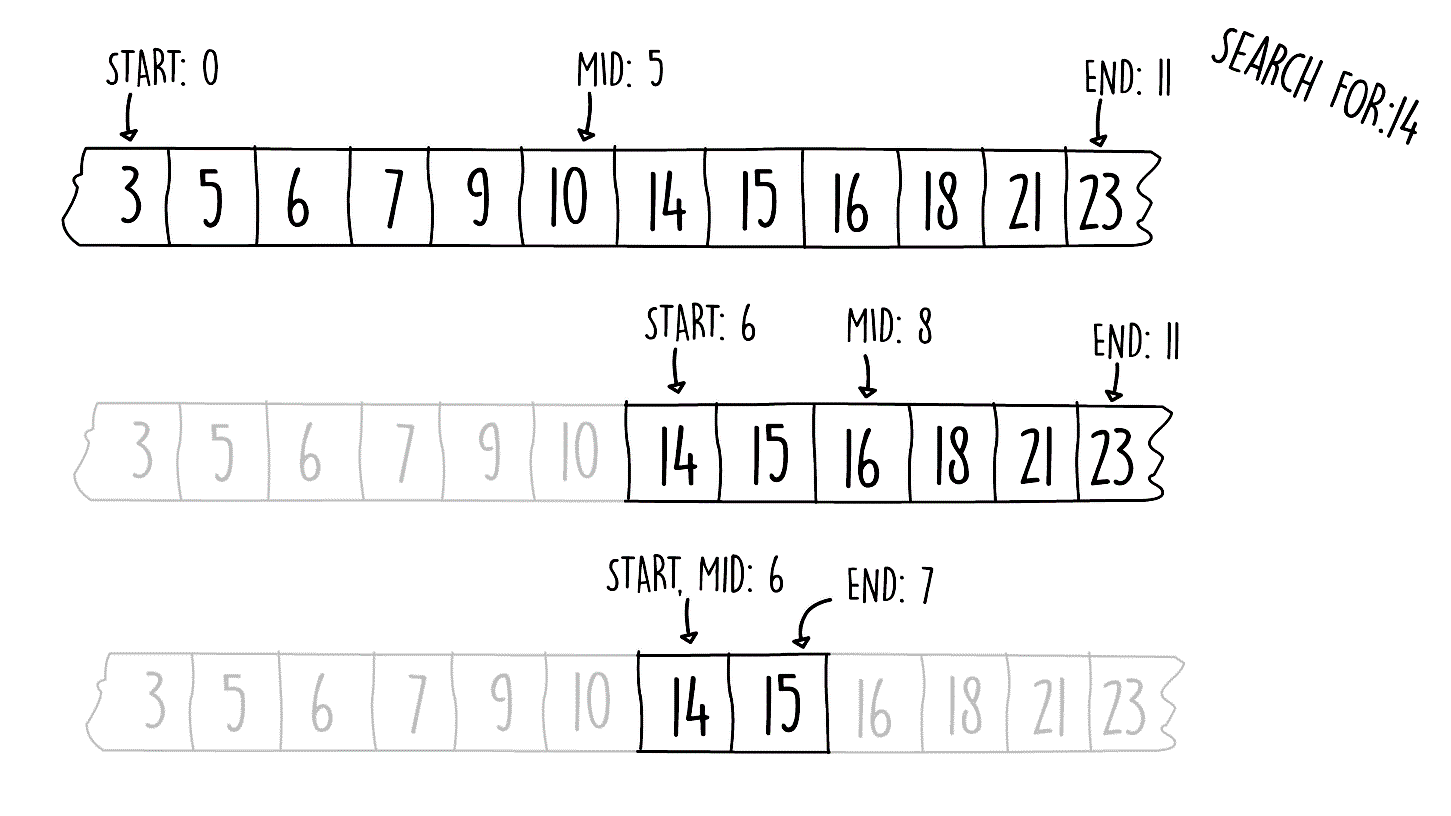Logarithmic complexity algorithms are very fast, and their performance hardly degrades as you increase the problem size. These types of algorithm scale really well. Code that has a runtime complexity of O(log n) is usually recognizable since it systematically divides the input in several steps. Common examples that operate in logarithmic times are database indexes and binary trees. If we want to find an item in a list, we can do it much more efficiently if the input list is sorted in some specific order. We can then use this ordering by jumping to specific positions of our list and skipping over a number of elements.
Snippet 1.7 shows an implementation of the binary search in Java. The method uses three array pointers—a start, an end, and a midpoint. The algorithm starts by checking the middle element in the array. If the element is not found and is less than the value at the middle, we choose to search in the lower half; otherwise, we choose the upper half. Figure 1.3 shows the steps involved when doing a binary search. The code snippet is as follows:
public boolean binarySearch(int x, int[] sortedNumbers) {
int end = sortedNumbers.length - 1;
int start = 0;
while (start <= end) {
int mid = (end - start) / 2 + start;
if (sortedNumbers[mid] == x) return true;
else if (sortedNumbers[mid] > x) end = mid - 1;
else start = mid + 1;
}
return false;
}
Take a look at the following diagram:

Assuming the worst case scenario, how big would the input size have to be if our binary search algorithm is 95 array jumps (such as the one shown in Figure 1.3)? Since this is a binary search, where we're splitting the search space in two, we should use a logarithm of base 2.
Also, the inverse of a logarithm is the exponential. Thus, we can say the following:
- log2 n = 95
- 295 = n
- 39614081257132168796771975168 = n
Logarithmic algorithms are the opposite of exponential ones. As the input gets bigger, the rate of performance degradation gets smaller. This is a very desirable property as it means that our problem can scale to a huge size and would hardly affect our performance. In this section, we gave one such example of this class of complexity.
